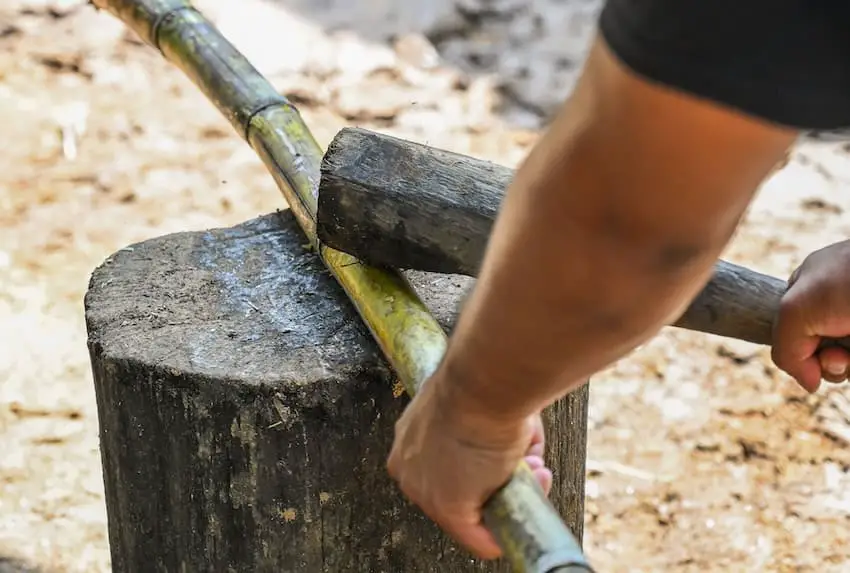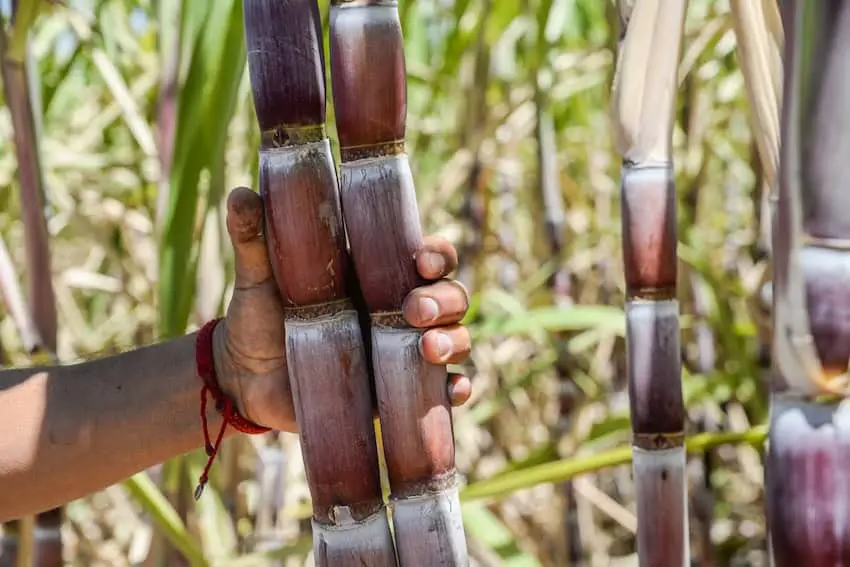Mexico might not be at the forefront of the mind when it comes to thinking of great rum producers. But Mexican rum has a profound, if often overlooked, legacy that lives on today at the hands of traditional distillers.
Mexican sugarcane rums are different from Caribbean rums in that they are generally produced using not molasses but fermented sugarcane juice. There are two prominent styles of this type of spirit in Mexico. The first is charanda, made from either molasses or fresh-pressed sugar cane. This spirit has a protected appellation of origin (AO), and can only be called charanda if it’s produced in certain parts of Michoacán.

A second style is locally called aguardiente, also known as Mexican agricole. Much of this liquor comes from mountainous areas in Oaxaca, where fresh-pressed aguardiente de caña is made in a manner akin to Martinican rhum agricole and Brazilian cachaça.
Sugarcane was first brought to Mexico by the Spanish. Over the next century, liquor production grew rapidly. Despite its popularity, Mexico’s growing liquor industry was hit by a royal prohibition to protect public morals and the interests of Spanish merchants, driving production underground.
Fortunately, as with many alcohol prohibitions around the world, people found a way to keep recipes and traditions alive. In Mexico, people made rum at home in secret small pot stills. This activity has kept the legacy of rum in Mexico alive.
Centuries later, Mexican sugarcane rum hit another hurdle with the introduction of NAFTA in 1994. Major transnational alcohol brands arrived with aggressive prices, marketing and branding. Mexican companies adjusted their prices to compete with foreign brands, going for volume over quality. This in turn reduced their margins and options for innovation. Overall, these developments led to a stigma of low quality around Mexican cane spirits.

In the past decade, consumer preferences have begun to change. A major shift towards craft production has swept through the liquor industry, with mezcal serving as the movement’s poster child. Underdog spirits such as raicilla and sotol have been on the rise, and Mexican sugarcane spirits are not far behind.
Small-batch cane spirit production draws many comparisons with traditional agave spirits. Production facilities are often far from the cities. Distillation traditions vary by location, creating a wide diversity of style and flavor. Ellisandro Gonzalez, who produces Dakabend sugarcane rum, explains that “rum from this part of the land will taste different than the next because the soil is different [and] the microclimates are different.”
Alongside Dakabend, Camazotz is one of the first of the new wave of Mexican rums reaching the international market. It was developed by Melanie Symonds, founder of Quiquiriqui mezcal, and partner Charles Koutris. Together they have led the way for deeply flavorful craft sugarcane rum to reach the United States, United Kingdom and beyond.
Symonds explains that she became interested in the idea around 2016. “There was a lot of industrially produced aguardiente de caña in the region, which isn’t great, but occasionally I’d visit a village to meet a mezcal producer and someone would bring over a plastic bottle that had the unmistakable smell of an agricole-style rum, something I have always loved!”
She asked the mezcal producers she works with to keep an eye out for small, traditional cane spirit producers. This went on for over a year, due to the challenges of reaching these producers whose products rarely made it out of the local area. She explains this was “much like mezcal back in the early 2010’s when you could drive off from Oaxaca city and follow the smoke plumes in the hills and there you’d find a magical palenque making beautiful liquid, untouched by the grubby hands of commercialization.”
In 2018 she was given a trio of samples made by a producer from a remote, steep, area of the Sierra Mixe, in eastern Oaxaca. Symonds remembers that “as soon as I opened one of them, there was the unmistakable smell of agricole.” This unique profile is what she then pursued for her sugarcane rum brand, Camazotz.
The day after she tried the sample, she took off on a four hour journey to the highest region of Oaxaca. “We arrived and met the producer of the rum, Leoncio Gaspar, at his family home, along with his wife and son. Leo learned to make rum from his father and has worked most of his life making rum at the family ranch, Punto Fiero, in the valley next to his village.”

Gaspar and his family grow their cane organically, without using pesticides or fertilizers. It takes approximately eighteen months to reach maturity and reaches up to three meters. Gaspar and his team harvest the cane by hand.
The area of Gaspar’s distillation is extremely remote, you need to hike for several hours down a mountain trail to reach his ranch. The setup at Punto Fiero hasn’t changed since his father was head distiller. They have a mule pulled cane press, fermenting tubs and a clay pot for distilling.
The press he uses at the family ranch is around 80 years old and is worked by Gaspar and the mule. The cane is fed into one side and pulled out of the other side, this is repeated to maximize the collection of the juice. One kilo of sugarcane yields approximately 700 milliliters of raw juice.
The juice is collected in a tub ready for fermentation. Symonds describes how “a bunch of the crushed cane is always added to the juice to kickstart the fermentation.” This helps the ambient yeasts relied on for this artisanal process. The ferment takes around 5 days to a few weeks, a time frame dependent on the outside temperature at the time of production.

Symonds says that the surrounding flora and fauna also have a dramatic impact on the wild yeast and therefore the flavor imparted through the fermentation. The ranch is surrounded by a very old wild banana plantation which plays an important role in the development of the unique flavor found in Camazotz.
The challenges for Symonds and Camazotz have been significant. “I can’t explain the difficulties of getting this rum to where we have,” she says, “from the remote location and hard work to produce the rum, trying to navigate a truck on the clifftop trails to collect it, to the ridiculous taxes and legal restrictions in place when you try and export. It’s way harder to export than mezcal because it does not have an AO. Mexican Customs have no idea what it is and we have had instances where they won’t let it leave port because we don’t have a certificate from the AO governing body. Hopefully as more people discover Oaxacan rum, this will change and it will become easier.”
Since Camazotz launched in 2019, they have sold to the USA, UK and Europe. Symonds also recognises the appeal for mezcal lovers “because of the hand made process and the similarities in how terroir affects the flavor.” She accepts that it “definitely helps having Quiquiriqui as the sister brand as it opens up introductions and often, where people say they hate rum and only drink agave, we find once they try it they are converted!”
She was reminded of launching her mezcal brand before many people knew what it was. It’s exciting and it feels extra special when you know the hard work it takes to get that liquid into a bottle. Leo’s face when we first took him a labeled bottle with his name on was also a special moment.”
Anna Bruce is an award-winning British photojournalist based in Oaxaca, Mexico. Just some of the media outlets she has worked with include Vice, The Financial Times, Time Out, Huffington Post, The Times of London, the BBC and Sony TV. Find out more about her work at her website or visit her on social media on Instagram or on Facebook.
